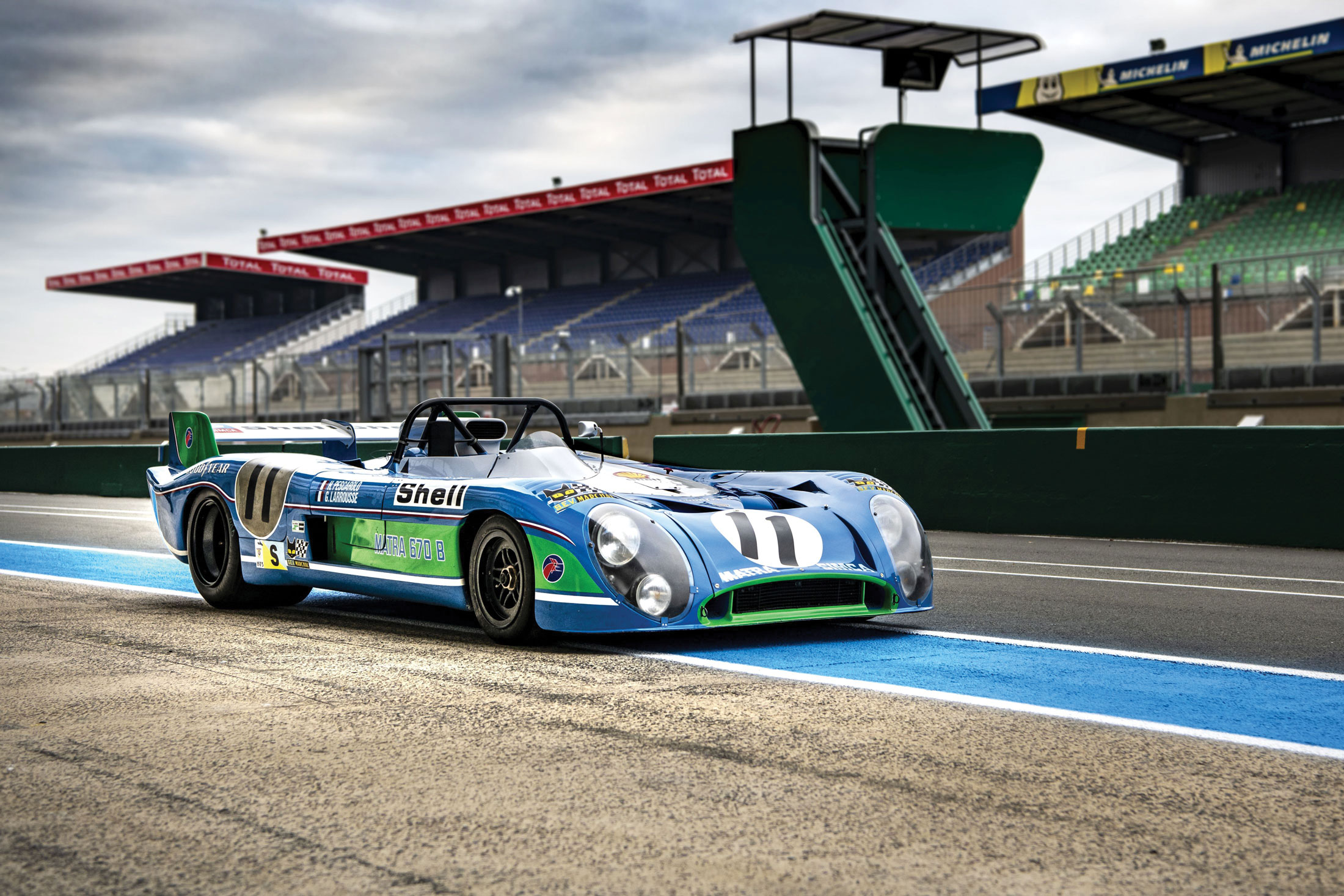Chassis Number: 67001
The car we are presenting is the MS 670-01 that won the 1972 Le Mans 24 Hours. Assembled in March 1972, it was also the first MS 670 built. Following testing at Le Castellet and Montlhéry, MS 670-01 was entered for the Le Mans 24 Hour race. It was fitted with a short tail and engine MS12 no. 52 which, benefiting from various upgrades, produced 416 bhp at 9,800 rpm, mated to a ZF box.
This car boasts a combination of remarkable features rarely found together in a race car of this caliber. It has never left the Matra factory, never changed hands and still belongs to the constructor who designed and built it from scratch, including the engine. It achieved Matra’s first win at Le Mans, the most famous race in the world, and also won a 1,000-km round of the World Championship.
As the first MS 670 constructed, the subsequent results for the model confirmed its excellent design and formidable versatility. It has its original shell, front axle and body (with front bonnet from the 1973 season and the spare tail from the winning 1973 car), as well as many of its accessories, none of which have been damaged. Its Porsche gearbox is the one from the 1973 victory and its engine is a V12 Matra built by the constructor. All modifications to its initial configuration were carried out at the initiative and with the agreement of the factory.

